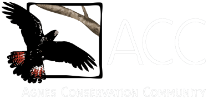Like a tiny spark of fire darting through the treetops, the male Scarlet Honeyeater is impossible to miss, once you spot him! With brilliant scarlet plumage on his head, chest, and back, he glows against the greens of the bush. The females are more subtly dressed in olive-brown tones with a pale belly—but just as busy and important in the bird world.
Primarily nectarivorous, the Scarlet Honeyeater feeds on the nectar of various flowering plants, such as eucalypts, paperbarks (Melaleuca spp.), and banksias. It also consumes insects, including beetles, flies, bugs, and caterpillars, gleaned from foliage or caught in flight. These little honeyeaters love flowers, especially grevilleas and eucalypts, and they use their curved beaks to sip nectar. They’re fast-moving, flitting from bloom to bloom, and often heard before they’re seen. Link to the males call.



